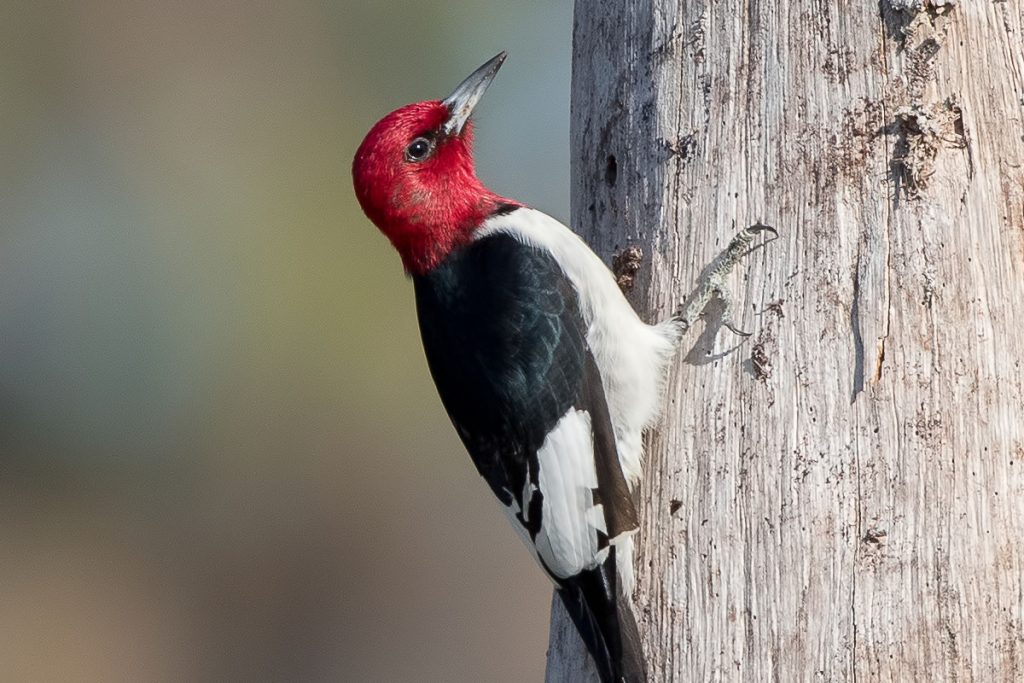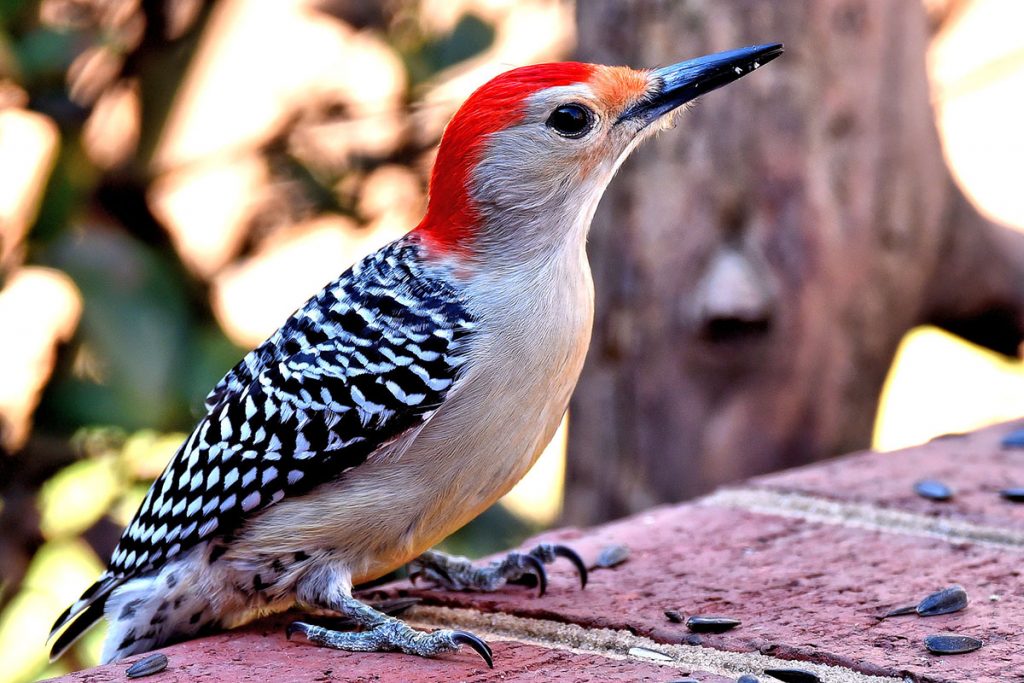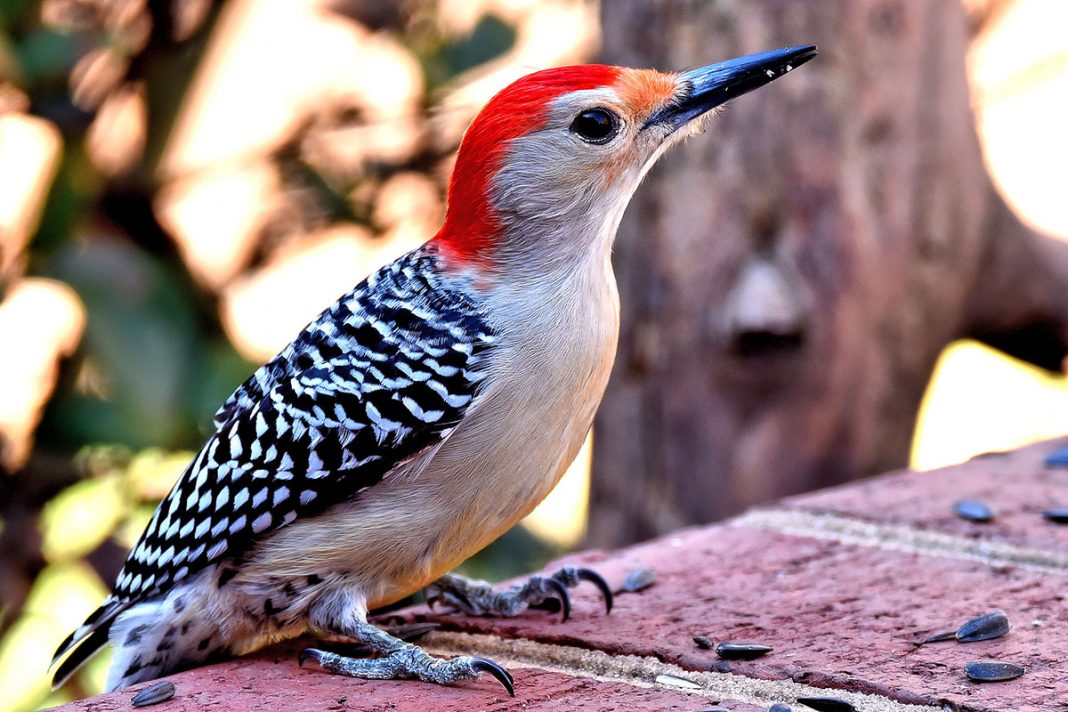Is it a red-headed woodpecker or a red-bellied woodpecker? One would think that the names are self-explanatory, right? One has a red head and one has a red belly. Both birds have red feathers on their heads so you might hear people tell you they saw a red-headed woodpecker when in fact it was a red-bellied woodpecker that they saw. A red-bellied woodpecker was named for an area on the lower front that is actually a light pinkish-rosy color—not really red. The top and back of the male’s head is red. Females lack the red crown but do have a red patch on the nape of the neck. Red-headed woodpeckers have a solid red head, neck and the top of the breast.

Both red-bellied and red-headed woodpeckers are year-round residents in our area with the red-bellied being the most common. They eat insects, acorns, other types of nuts, berries, fruit, seeds, and will also eat sap from trees, mice, and nestlings (baby birds). They like to store food in cracks and crevices of trees.

Woodpeckers like to use their beaks to “drum” on hollow limbs, utility poles, gutters or the siding of your house. This “drumming” is used to attract and communicate with potential mates, to communicate a food source to its mate or can be a call for help at the nest. They can drum up to twenty times a second.
The red-bellied female will lay up to five eggs. One egg is laid each day. Babies are fed by both parents for up to four weeks. Once they fledge, Mom and Dad will continue to look after them for another six or more weeks. The red-headed female will lay between four and seven eggs. Both parents feed the babies. What’s unique about the red-bellies is that they can have two broods in the same season. They may still be caring for their fledglings while attempting to have their second brood.
Some interesting facts about woodpeckers are:
- Woodpeckers have stiff feathers near the nostrils that prevent small pieces of wood from getting into the nostril.
- They have extremely sharp claws for hanging on trees. There are four toes on each foot and the arrangement of the toes is called “zygodactyl.” The first and fourth toes are pointed backwards, the second and third face forward.
- The tail of the woodpecker has spikes that dig into tree trunks and helps to keep the bird anchored.
- Woodpeckers have extraordinarily long tongues. There is a barb at the tip for catching insects and grubs.
Texas Wildlife Rehabilitation Coalition (TWRC) is celebrating 40 years serving the greater Houston area. Thank you to all of our supporters and those that care about wildlife as much as we do. If you have questions or would like to volunteer, call 713.468.8972.















